THE ORIGINAL, RESEARCH-PROVEN STABILISED RICE BRAN CONDITIONING SUPPLEMENT
Stabilised rice bran, which is the main ingredient in Equi-Jewel, has become a popular dietary additive for many different types of horses. In…
Free Delivery when you spend $49 or more. (Weight Limits Apply – view more)
 Dog
Dog

Shop Tuckers great range of dog food, health care & wellness products today. Delivered or Click & Collect.
 Cat
Cat

Tuckers has a great range of cat food, health care & litter products for your beloved cat. Shop now.
 Horse
Horse

Tuckers carry a huge range of food, supplements, health care, hoof care and grooming accessories. Shop now.
 Chook/Bird
Chook/Bird

Tuckers range of food, accessories & health care products will keep your chooks & birds happy and healthy.
 Small Animal
Small Animal

Shop food and health care products for your little mates @ Tuckers. Delivered or Click & Collect.
 Farm/Garden
Farm/Garden

Tuckers carry a wide range of sheep & cattle products, plus everything you’ll need around the farm or garden.
 Dog
Dog

Shop Tuckers great range of dog food, health care & wellness products today. Delivered or Click & Collect.
 Cat
Cat

Tuckers has a great range of cat food, health care & litter products for your beloved cat. Shop now.
 Horse
Horse

Tuckers carry a huge range of food, supplements, health care, hoof care and grooming accessories. Shop now.
 Chook/Bird
Chook/Bird

Tuckers range of food, accessories & health care products will keep your chooks & birds happy and healthy.
 Small Animal
Small Animal

Shop food and health care products for your little mates @ Tuckers. Delivered or Click & Collect.
 Farm/Garden
Farm/Garden

Tuckers carry a wide range of sheep & cattle products, plus everything you’ll need around the farm or garden.

By Kentucky Equine Research Staff

Horses with neurological deficits often express the same clinical signs despite being diagnosed with different diseases. Diagnostic tests capable of rapidly differentiating neurologic conditions are currently unavailable. To facilitate the diagnostic process, researchers took a novel approach, measuring a specific protein generated by damaged neurons in the central nervous system called phosphorylated neurofilament heavy protein (pNfH).
“Common signs of neurological diseases include incoordination, decreased proprioception, and even recumbency,” said Kathleen Crandell, Ph.D., a nutritionist for Kentucky Equine Research. Proprioception is the awareness of the position and movement of the body and limbs. These clinical signs can be observed in horses with:
“Veterinarians need tests that can quickly and correctly diagnose neurologic diseases in horses to initiate appropriate therapy and, when needed, institute appropriate biosecurity protocols. This is particularly true for conditions such as equine protozoal myeloencephalitis and eNAD/EDM, where no definitive antemortem diagnosis is possible,” advised Crandell.
Researchers recently looked at measuring pNfH in blood and cerebrospinal fluid (CSF) as a way to diagnose neurological disease*. Because pNfH is released from impaired neurons, any condition directly damaging neurons, such as eNAD/EDM, could be expected to generate high levels of the protein. To test this hypothesis, samples of blood and CSF were collected from healthy horses and those with two distinct neurologic diseases, eNAD/EDM and CVCM.
The researchers found, however, that while pNfH appeared to be a good candidate marker for eNAD/EDM on paper, the results of the study were not cut-and-dried.
These data indicate that pNfH can be useful in certain situations, but this biomarker still cannot clearly differentiate between diseases that result in axonal degeneration, including eNAD/EDM and CVCM.
Disease prevention is clearly preferable. With eNAD/EDM, many cases are believed to be avoidable by ensuring broodmares as well as foals and young horses have access to lush, green pasture or adequate vitamin E levels.
“Kentucky Equine Research offers an incredibly bioavailable vitamin E supplement that features nanodispersion technology. Nano-E is rapidly absorbed by the horse and can help prevent diseases caused by diets deficient in vitamin E or treat vitamin E deficiency disorders,” said Crandell. “Importantly, the rate of absorption for Nano-E compared to synthetic natural E cannot be discounted. Nano-E raises serum levels to peak values within 12 hours of administration.”
Learn more by reading “Vitamin E Nutrition in Healthy and Neurologic Horses,” an article that begins on page 93 of the 2018 Kentucky Equine Research Conference proceedings.
*Edwards, L.A., C.G. Donnelly, S.M. Reed, S. Valberg, M. Chigerwe, A.L. Johnson, and C.J. Finno. 2021. Serum and cerebrospinal fluid phosphorylated neurofilament heavy protein concentrations in equine neurodegenerative diseases. Equine Veterinary Journal:13452.
Entire range - quick and secure delivery
Buy securely online and pickup at your local store
Call your local store and come on down to pickup
© 2024 Tuckers Pet & Produce.
